While most people are familiar with traditional equestrian events like show jumping, dressage, and racing, the world of horse sports extends far beyond these Olympic disciplines. Across cultures and throughout history, humans have developed fascinating and sometimes bizarre competitions that showcase the remarkable bond between horse and rider. These lesser-known equestrian sports often reflect cultural traditions, historical practices, or simply the creative ways people have found to challenge themselves and their equine partners. From ancient Central Asian games played with goat carcasses to modern mounted archery revivals, these unique horse sports demonstrate the incredible versatility of equestrian activities. Let’s explore some of the most unusual and captivating horse sports from around the world that deserve more recognition.
Buzkashi: The Ancient Goat-Grabbing Game
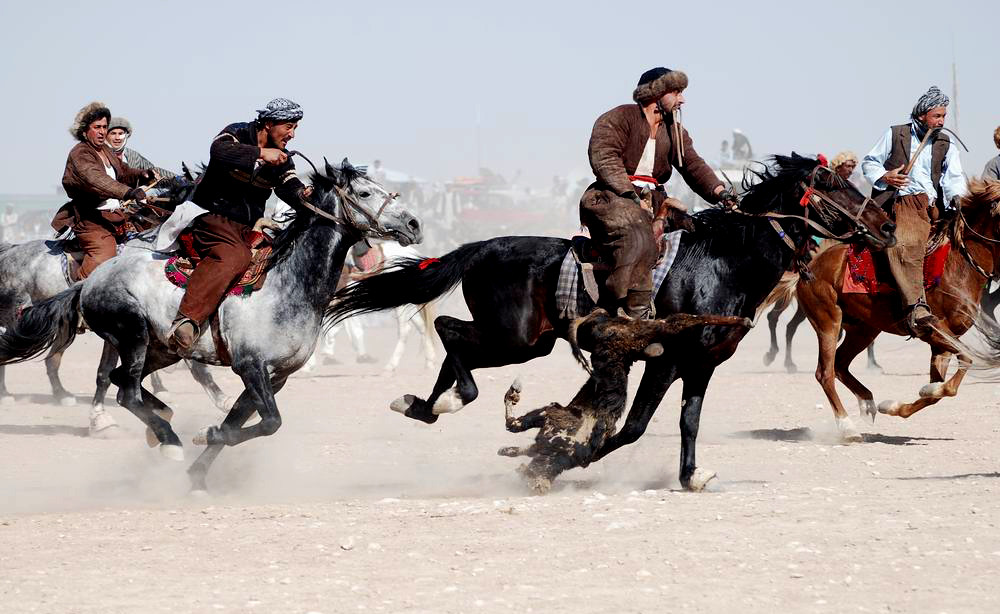
Originating in Central Asia and particularly popular in Afghanistan, Buzkashi (literally “goat grabbing”) is perhaps one of the world’s most intense equestrian sports. Riders compete to grab a goat or calf carcass from the ground while galloping at full speed, and then carry it around a flag or marker before returning to a scoring circle. Matches can involve dozens or even hundreds of riders simultaneously, creating a chaotic and dangerous competition that requires exceptional horsemanship, strength, and courage. The sport dates back to the days of Genghis Khan, when Mongol warriors used it as training for battle, and today it remains the national sport of Afghanistan despite being temporarily banned during Taliban rule. Modern variations sometimes use a synthetic carcass, but traditional competitions still use a headless goat that has been soaked in water for added weight and durability.
Horseball: Equestrian Basketball with Rugby Elements
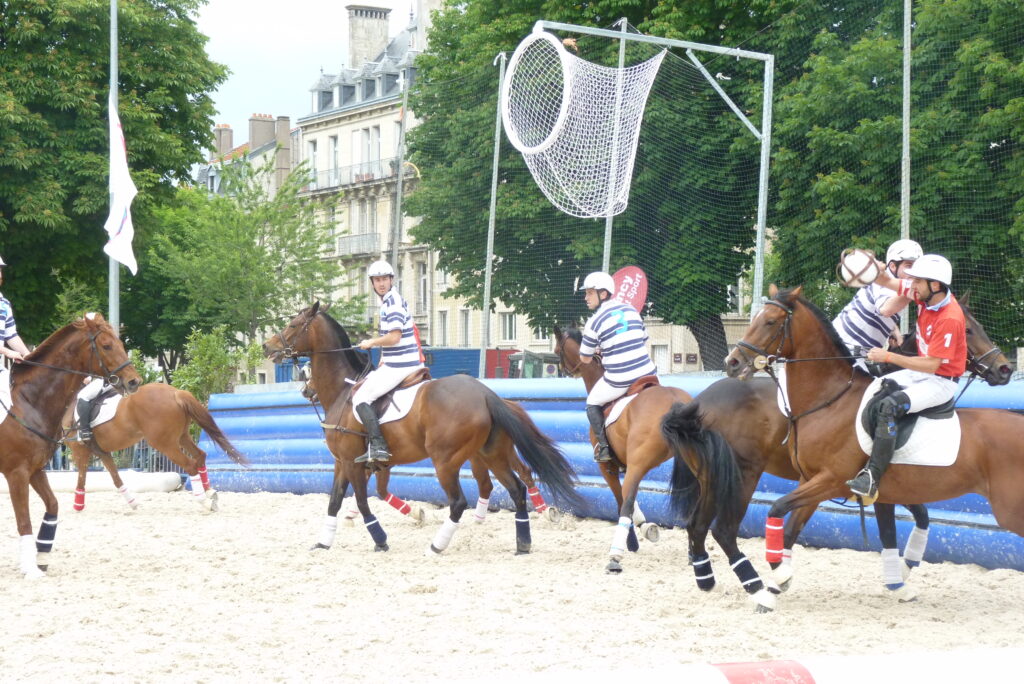
Imagine basketball played on horseback with a touch of rugby, and you’ll get horseball, a fast-paced team sport that originated in France in the 1970s. Teams of four riders compete to score goals by throwing a ball (equipped with six leather handles) through a vertical hoop suspended high above the ground. Players must follow a rule of “three passes between three different players” before attempting to score, and the ball can be retrieved from the ground without dismounting through a technique called “ramassage.” What makes horseball particularly exciting is that players can intercept passes and engage in physical contact between horses, creating a dynamic sport that requires excellent riding skills, teamwork, and ball-handling abilities. The sport is now played competitively across Europe, Australia, and parts of North America, with regular international championships drawing increasing attention.
Mounted Archery: The Ancient Art of Shooting on Horseback

While archery from horseback was once a vital military skill across numerous cultures, it has experienced a remarkable revival as a competitive sport in recent decades. Modern mounted archery competitions require riders to shoot targets while controlling their horse without reins, often at a gallop along a straight course or sometimes on a winding path. Different traditions exist, from Hungarian style (shooting at 90-degree angles) to Korean style (shooting at multiple angles) to Yabusame (the Japanese ceremonial version performed in traditional clothing). The sport demands extraordinary focus and coordination, as competitors must maintain their balance, control their horse with just their legs, draw and aim their bow, and hit targets accurately—all while moving at speed. International competitions now draw participants from dozens of countries, with the World Nomad Games featuring mounted archery as one of its premier events.
Tent Pegging: Precision with a Lance
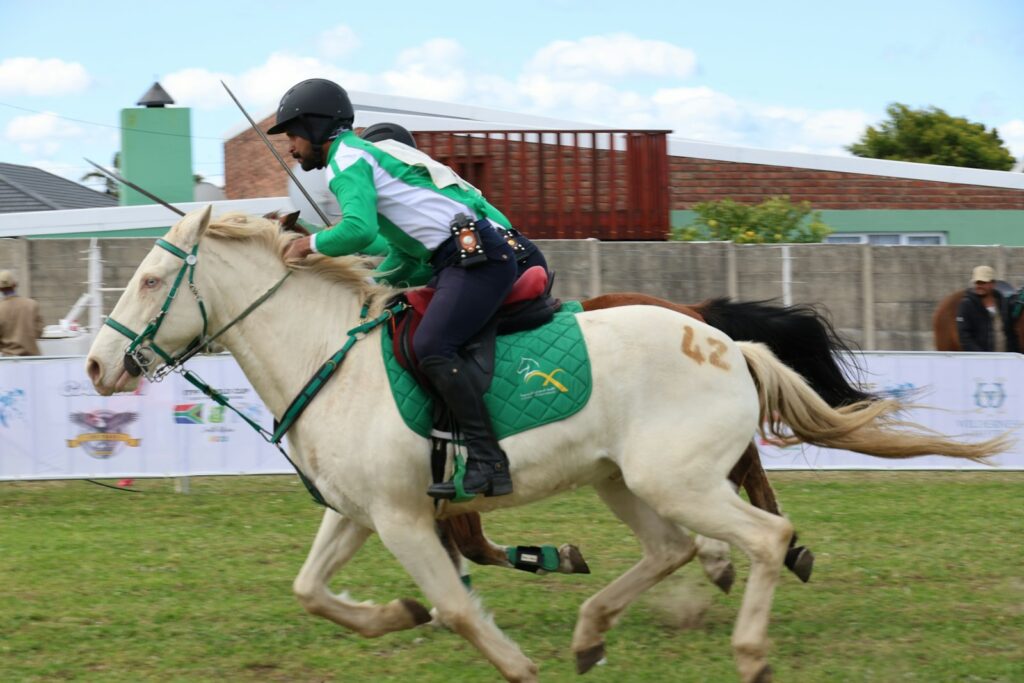
Dating back to medieval cavalry training, tent pegging is a sport where mounted riders attempt to collect small ground targets using a lance or sword while galloping at speeds of up to 25 mph. The name comes from the historical practice of cavalry soldiers using their weapons to uproot the pegs of enemy tents during surprise attacks. Modern competitions involve wooden pegs or similar targets embedded in the ground that riders must spear and carry away, with points awarded for clean extractions. The sport requires perfect timing, exceptional aim, and complete harmony between horse and rider. Particularly popular in countries with strong cavalry traditions like India, Pakistan, Australia, and the United Kingdom, tent pegging is recognized by the International Equestrian Federation and features both individual and team events at international competitions, including the World Equestrian Games.
Skijoring: Horse-Powered Skiing
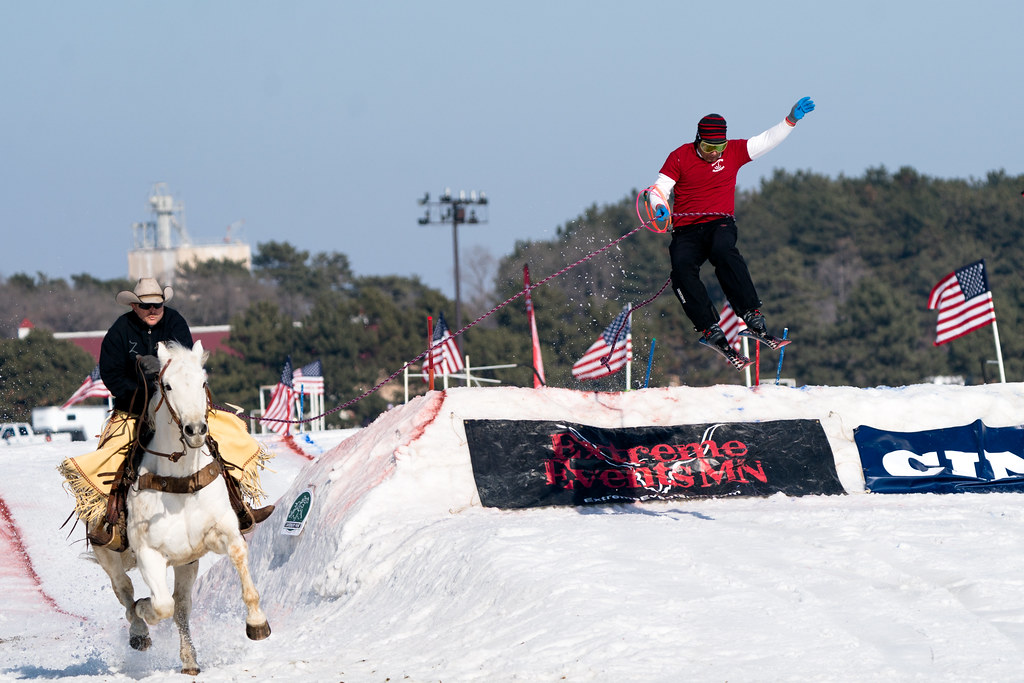
Combining equestrian skills with winter sports, skijoring involves a horse pulling a person on skis through a snow-covered course. The skier navigates jumps, gates, and obstacles while being towed at speeds that can exceed 40 miles per hour. While recreational skijoring can be relatively sedate, competitive events are adrenaline-fueled races against the clock, often featuring courses with jumps as high as seven feet. The sport originated in Scandinavia, where it was initially used as winter transportation, but has evolved into a popular competitive event throughout snow-belt regions, particularly in the American West, where annual championships draw large crowds. Some variations replace the horse with dogs or motorized vehicles, but equestrian skijoring remains the classic form of the sport, demanding coordination between three entities: rider, horse, and skier.
Jousting: The Medieval Combat Sport Making a Comeback
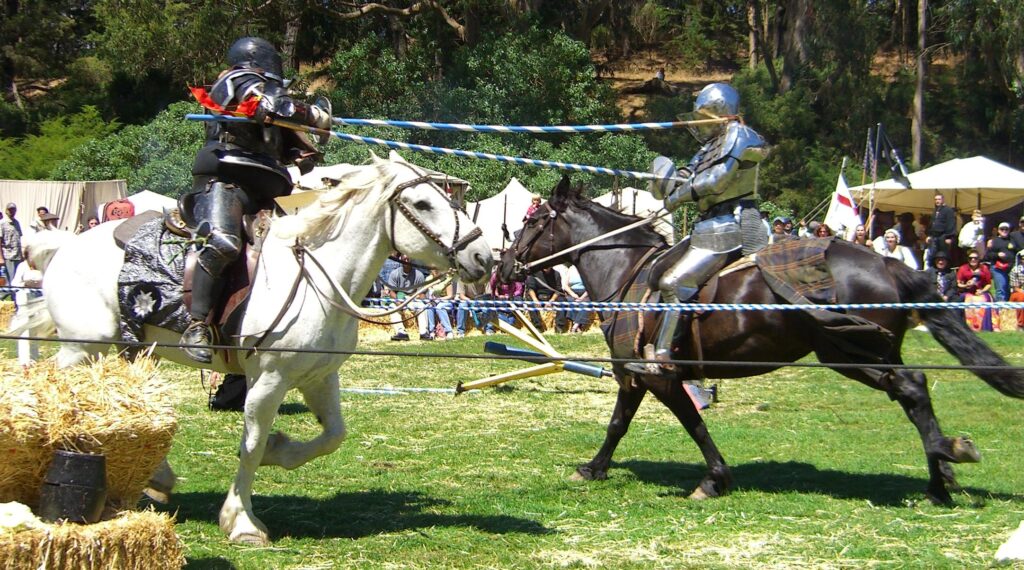
While jousting might not be completely unknown thanks to medieval films and renaissance fairs, competitive modern jousting is far more authentic and dangerous than many realize. Today’s competitive jousters ride at each other with solid wooden lances, wearing historically accurate armor that weighs up to 100 pounds, attempting to strike specific target areas on their opponent’s shield or armor. The impact when lance meets armor generates forces that can exceed 1,000 pounds, making it one of the most physically demanding equestrian sports. Modern competitions are held throughout Europe and North America, with organizations like the International Jousting Association establishing standardized rules for competitive tournaments. Maryland even named jousting its official state sport in 1962, hosting regular tournaments that maintain the medieval tradition with impressive historical accuracy.
Camargue Racing: Bareback Bull-Fighting on Horseback

In the marshy Camargue region of southern France, a unique equestrian tradition involves small white horses and young bulls in a competition of skill and courage. Unlike Spanish bullfighting, the goal in Camargue racing is not to harm the bull but to pluck small tokens (cockades or tassels) from between the bull’s horns while riding bareback on the region’s indigenous white horses. Competitors called “raseteurs” dash toward the bull on horseback, reach between its horns to grab the prize, and then quickly retreat before the bull can react. The sport requires incredible coordination, timing, and trust between horse and rider, as any hesitation could result in serious injury. These events take place in circular arenas throughout the Camargue region, especially during summer festivals, and remain deeply connected to the local culture and the region’s distinctive breed of horse.
Polo Crosse: The Hybrid Sport Gaining Global Popularity
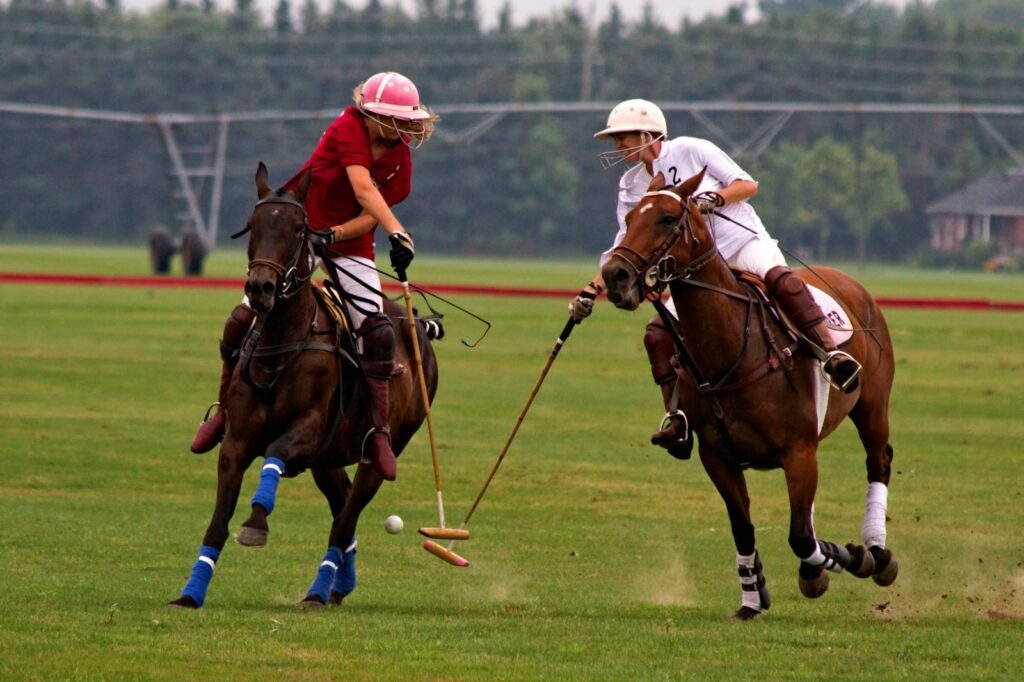
Invented in Australia in the 1930s, polocrosse combines elements of polo and lacrosse into a fast-paced team sport that’s more accessible than traditional polo. Riders use racquets with loose, net-like heads to carry and throw a sponge rubber ball, attempting to score by throwing it through their opponents’ goal posts. Each player is assigned a specific position with defensive or offensive responsibilities, similar to basketball or netball, and unlike polo, players use just one horse throughout the match. The sport’s relatively simple equipment requirements and straightforward rules have helped it spread to over 25 countries, with particularly strong participation in Australia, South Africa, the United Kingdom, and the United States. International competitions like the Polocrosse World Cup now draw significant attention, with Australia typically dominating the sport they created.
Cirit: The Turkish Javelin Game
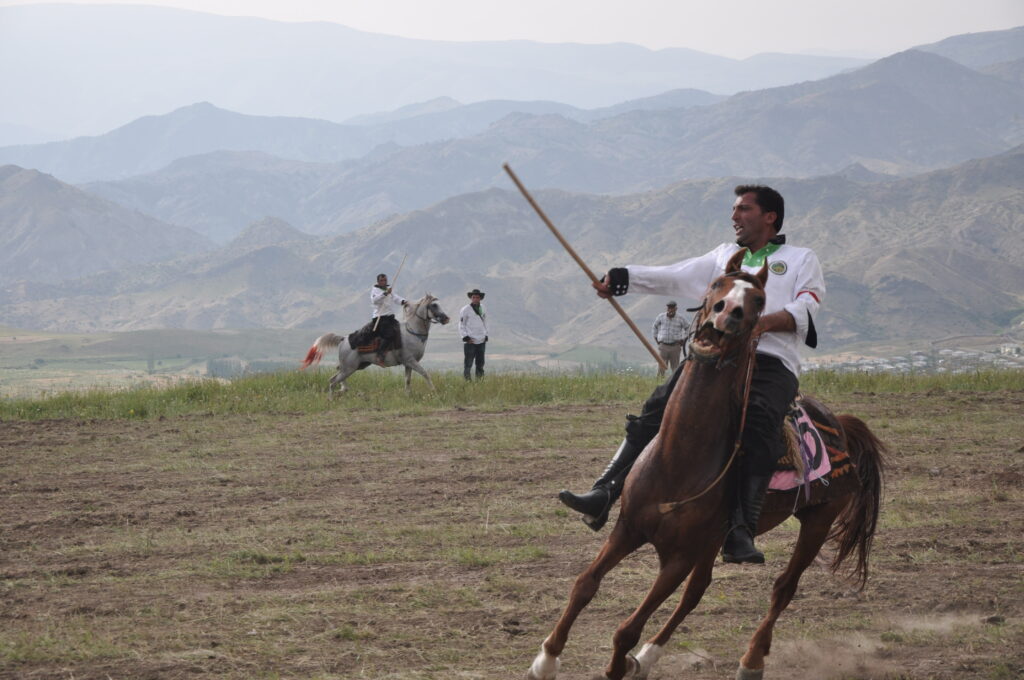
Dating back to the Ottoman Empire, Cirit (or Jereed) is a traditional Turkish equestrian sport that simulates battlefield javelin throwing. Teams of riders armed with blunt wooden javelins chase each other on horseback, throwing their weapons at opponents who must either catch the incoming javelin or evade it through skilled horsemanship. Historically, the sport was used to train cavalry units, developing both throwing accuracy and evasive riding skills. Though it nearly disappeared in the early 20th century, Cirit has experienced a revival in Turkey as a cultural heritage sport, with regular competitions held in eastern provinces like Erzurum and Kars. The sport requires exceptional riding ability, as participants must control their horses with just their legs while throwing and catching javelins at a gallop, making it one of the most technically demanding mounted sports in existence.
Charreada: The Mexican Rodeo Tradition
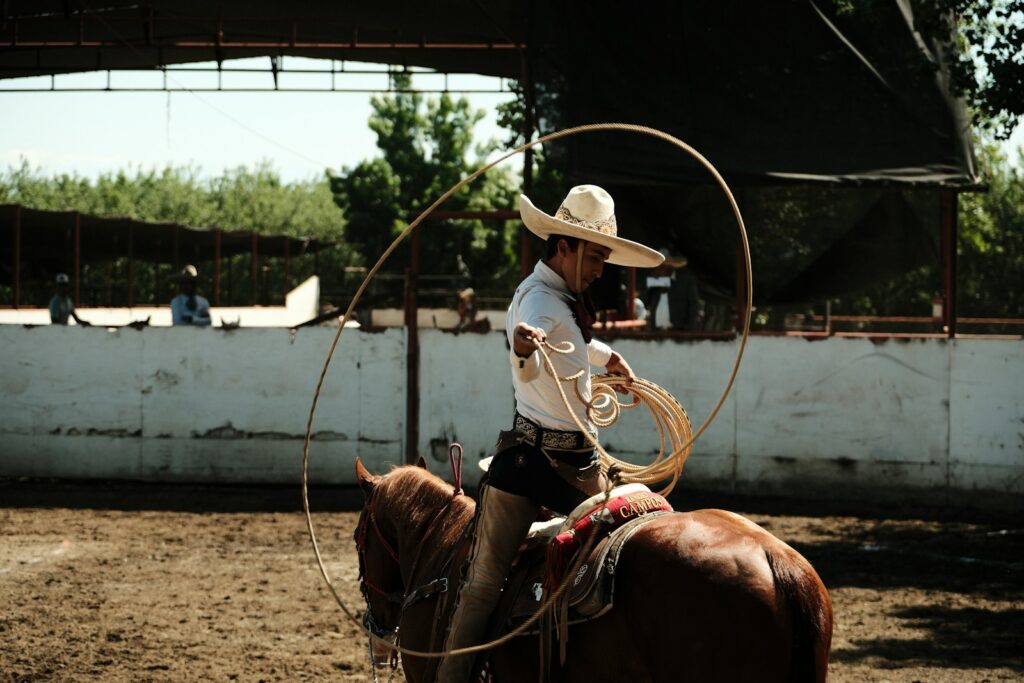
While American rodeo may be familiar to many, its Mexican counterpart, Charreada, features several unique equestrian events that showcase extraordinary horsemanship. Perhaps most impressive is the “paso de la muerte” (pass of death), where riders transition from their own horse to an untamed horse riding bareback at full gallop. Another spectacular event is “coleadero,” where charros (Mexican cowboys) grab a running bull by the tail and wrap it around their leg, attempting to bring the animal down by making a precise turn on their horse. Female riders called escaramuzas perform intricate synchronized routines while riding sidesaddle at high speeds, executing complex patterns and crossings that require split-second timing. Deeply embedded in Mexican cultural identity, charreadas are colorful social events featuring traditional music, costumes, and strict adherence to historical techniques and equipment that differentiate them significantly from North American rodeos.
Horse Surfing: The Newest Extreme Equestrian Sport
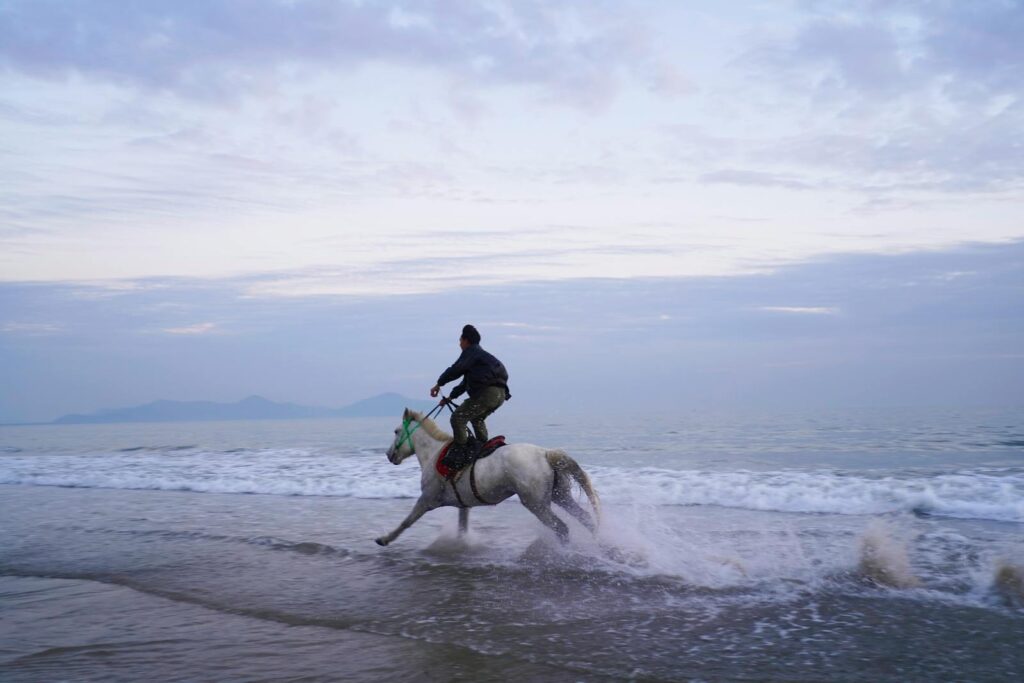
As one of the newest additions to equestrian sports, horse surfing involves a person on a surfboard, wakeboard, or skimboard being pulled through water by a galloping horse along a beach. First developed in the early 2000s, this extreme sport combines elements of water sports with horsemanship for a unique adrenaline experience. The horse typically runs through shallow water along shorelines, pulling the “surfer” who must maintain balance while being pulled at speeds of up to 25 mph. Competitions judge riders on speed, technique, and the execution of tricks or jumps using natural features or constructed ramps. Popular primarily in coastal locations with long, flat beaches like those in the United Kingdom, Australia, and parts of the United States, horse surfing remains largely unregulated and continues to evolve as participants develop new techniques and tricks that push the boundaries of this unusual human-equine partnership.
Horseback Falconry: The Sport of Kings and Nomads
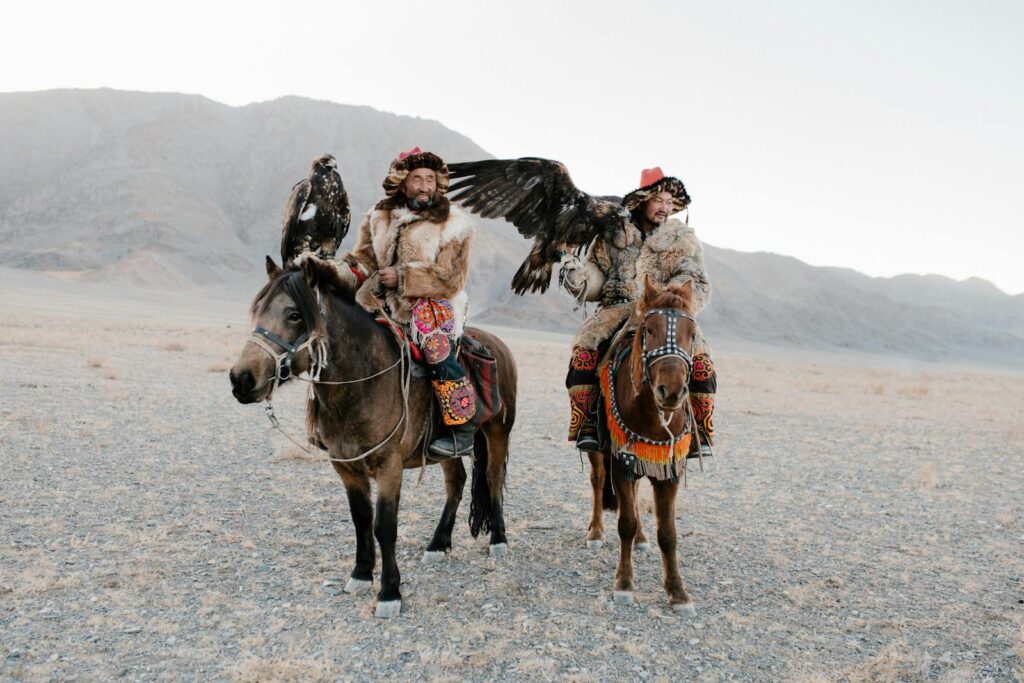
Combining two ancient hunting traditions, mounted falconry involves riding on horseback while managing a trained bird of prey that hunts for the rider. This challenging sport requires the rider to control their horse with minimal hand input while releasing, recalling, and handling a falcon or hawk that flies independently to catch prey. Historically practiced across Central Asia, the Middle East, and parts of Europe, mounted falconry was traditionally a method of hunting game but has evolved into a competitive sport and cultural preservation activity. Modern competitions judge riders on their horsemanship, their control of the bird, the success of hunts (now often using dummy lures rather than live prey), and the seamless integration of these two challenging disciplines. Annual festivals in countries like Kazakhstan, Mongolia, and Morocco showcase this remarkable skill, with the UNESCO-recognized heritage practice drawing increasing international attention.
Cowboy Dressage: Western Riding Meets Classical Training
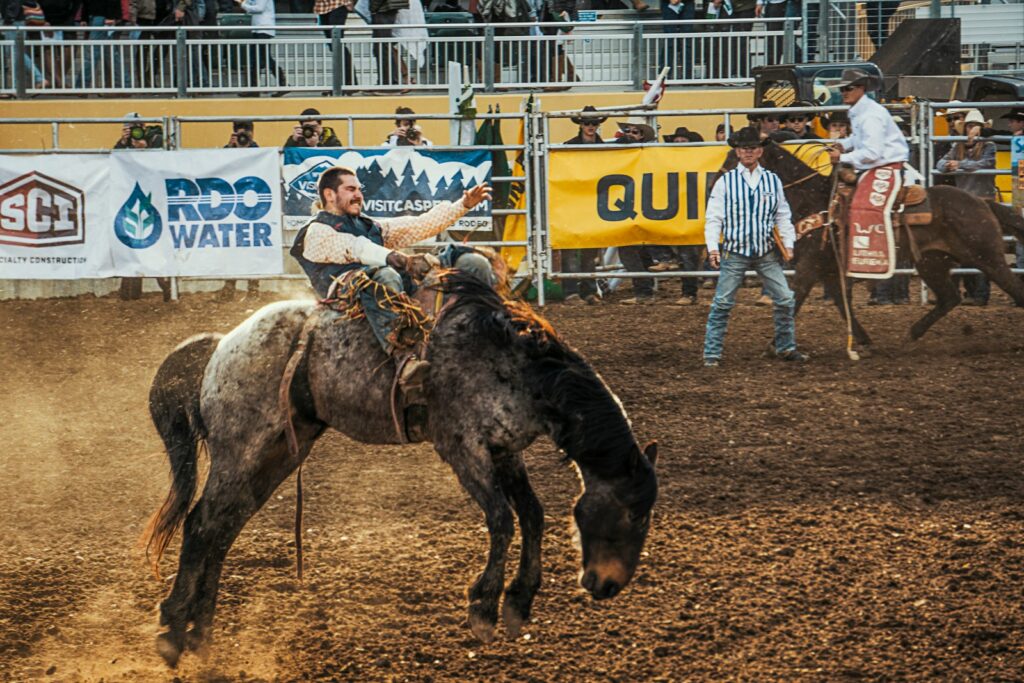
Developed in the early 2000s by horseman Eitan Beth-Halachmy, Cowboy Dressage combines the precision and collection of classical dressage with the practical, relaxed approach of Western riding. Unlike traditional dressage with its formal attire and European roots, Cowboy Dressage riders wear Western gear and ride in Western saddles, often on stock horse breeds, performing patterns that emphasize soft feel, proper cadence, and willingness rather than the extreme collection seen in Olympic dressage. Competitions take place in a specially designed court with specific patterns of movements, but judges prioritize the harmony between horse and rider over technical perfection. The sport has grown rapidly across North America, providing an accessible entry point to precision riding for Western enthusiasts who appreciate the democratic “horse for everyone” philosophy that underpins Cowboy Dressage’s welcoming community approach to competitive equestrian activities.
Conclusion

The world of equestrian sports extends far beyond the familiar disciplines seen at the Olympics or on television. These unique mounted activities not only provide exciting competition but also preserve cultural traditions and historical practices that might otherwise be lost to time. From the battlefield preparations of ancient warriors to modern extreme sports like horse surfing, the incredible partnership between humans and horses continues to evolve in fascinating ways. Whether you’re a seasoned equestrian looking for a new challenge or simply someone who appreciates the diverse ways cultures around the world have incorporated horses into their traditions, these unusual equestrian sports demonstrate the remarkable versatility and enduring appeal of one of humanity’s oldest animal partnerships.







